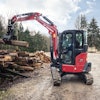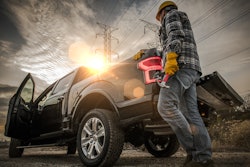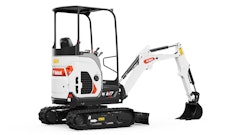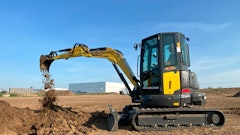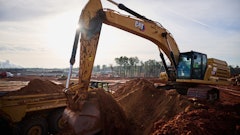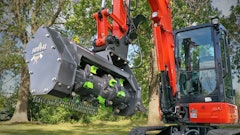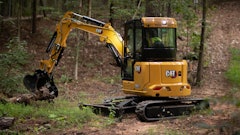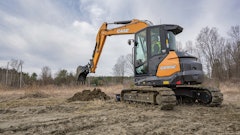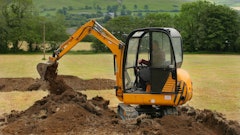
As electric construction equipment continues to steal the spotlight, many renters and rental house managers have questions. Is the performance the same? How will charging work with the flow of my day? What is maintenance like? Is electrification worth all the hype?
The short answer is that most people are pleasantly surprised by an electric machine’s power, ease of use and simpler maintenance, but if you’re not satisfied with a short answer, let’s take a deeper dive into electrification with compact equipment like mini excavators and small wheel loaders.
The power hasn’t diminished
Some people think an electric machine must be inferior to a diesel machine in some way—usually power, but that’s not the case. In fact, in addition to matching (or, in some instances, exceeding) the power of diesel models, electric construction equipment offers more advantages.
One of the most popular aspects is that the electric motor provides instant torque as soon as the operator starts running the machine. There’s no feeling of a slight delay, which can happen with some diesel equipment. And in most cases, these machines have the same (or nearly the same) specs as their conventional counterparts. Bottom line: your customers will not be complaining to you about a drop in performance.
Charging is simpler than it seems
Imagine filling your car with gasoline. Would you rather do it with a gas can or a fuel pump? The same logic applies for electric: The more power you can put into your machine, the faster it will charge.
The best setup is a 240-volt, 32-amp Level 2 AC-charging outlet that utilizes an SAE J1772 charging adapter or J plug. Don’t let the terminology intimidate you—this is the same setup recommended for electric cars and many household appliances, and it’s easy to install if you don’t already have it. You could also use a regular 120-volt outlet, but it will take longer (about 24 hours versus six).
There are also options like off-board DC fast chargers and solar-powered chargers. These solutions are getting better and more prevalent every day, it seems. As electric passenger vehicles continue to grow in popularity, improved charging infrastructure will follow suit. No matter what route you go, you’ll be able to tell customers that the charging is one less task on their plates.
Batteries often last all day
Compact equipment can be used in so many ways, and the differences can alter how long the batteries last. Charge whenever the user has a pause in their workday. Heavier work like cutting and grading may require a quick charge at lunch. Meanwhile, customers who use the machine intermittently or in lighter applications have found that a charge can last them all day.
Many electric machines include an automatic shutdown feature, so when an operator stops running the machine, the electric motor turns off almost immediately. To get working again, the electric motor turns on instantly and provides immediate power.
With diesel equipment, operating time is defined by the engine run time, and a lot of those hours are counted while the machine is idle. So, 10,000 hours on a diesel machine might only equate to 6,000 or 7,000 hours on a comparable electric machine. These saved hours lower operating costs, improve total cost of ownership and boost resale value. This can benefit your profit margin or allow you to adjust your rates so that you're more competitive while still looking after your bottom line.
Mechanics will love the maintenance
In today’s challenging labor market, you’ll be happy to hear that maintenance is much simpler on an electric machine. For one thing, diesel exhaust fluid or other filters are not needed. Essentially, the only supplies required are grease and hydraulic oil. Overall, the lifetime of battery-electric components should be equal to or better than that of the diesel engine on a conventional machine.
Because we’re talking about machines using electricity, much of the training needed for technicians is about safety. They’ll also need to learn some new concepts and functions, but that’s part of our ever-evolving industry. The reduced amount of time and resources spent on maintenance in the long run is a great perk for both the renter and the owner.
Why you should try electric
Just think of all the new and different ways electric equipment can be used thanks to its zero emissions and lower noise. Your customers can work indoors, outside of normal business hours, close to living things…the list goes on. These benefits open the doors of possibility for those looking to expand their offerings, and we all know that renting is a great way for customers to try new things.
More governments are adopting clean air policies, and private companies are setting their own sustainability goals, so if you want to help your customers improve their odds of winning bids, offering electric equipment is a big step in the right direction. Regardless of what innovation is coming down the pipeline, electric equipment is a switch many can make right now to start making a difference.



